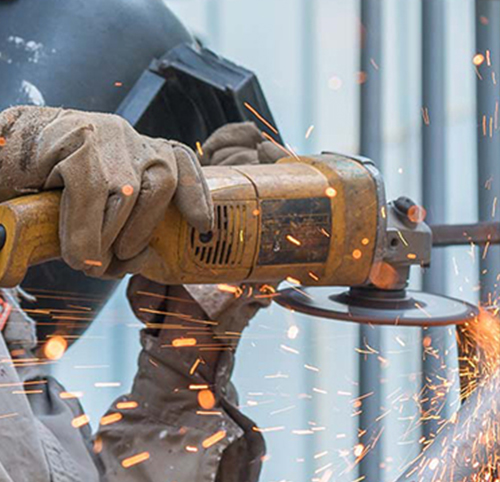Crash Barriers and Public Health: Reducing the Burden of Road Traffic Injuries

Crash Barriers and Public Health: Reducing the Burden of Road Traffic Injuries
Road traffic injuries are a significant public health concern worldwide, contributing to a substantial burden of mortality, morbidity, and disability. Effective road safety measures are crucial to mitigating these impacts. Among these measures, crash barriers play a vital role in reducing the severity and occurrence of road traffic accidents.
Main Causes of Road Accidents
Understanding the primary causes of road accidents is essential for devising effective prevention strategies. The main factors include:
1. **Human Error**: The majority of road accidents are attributed to human error, such as distracted driving, speeding, drunk driving, and failure to obey traffic signals.
2. **Road Conditions**: Poorly maintained roads, potholes, inadequate signage, and a lack of proper lighting can lead to accidents.
3. **Vehicle Issues**: Mechanical failures, tire blowouts, and brake malfunctions can cause drivers to lose control.
4. **Weather Conditions**: Adverse weather conditions like rain, fog, and snow can impair visibility and road traction, leading to accidents.
5. **Infrastructure Design**: Inadequate road design, such as sharp curves, insufficient shoulder space, and a lack of pedestrian crossings, increases the risk of accidents.
Importance of Road Accident
Prevention Preventing road accidents is crucial for several reasons:
1. **Saving Lives**: Road accidents result in a significant number of fatalities. Preventive measures can save thousands of lives annually.
2. **Reducing Injuries**: Accidents often lead to severe injuries, requiring extensive medical treatment and rehabilitation. Prevention reduces the incidence of such injuries.
3. **Economic Impact**: Road accidents impose a heavy economic burden due to healthcare costs, loss of productivity, and damage to vehicles and infrastructure.
4. **Improving Quality of Life**: Reducing accidents enhances the overall quality of life by creating safer environments for travel and reducing stress and anxiety associated with road use.
How Crash Barriers Help in Preventing Occurrences
Crash barriers are physical structures designed to prevent vehicles from leaving the roadway, crossing into oncoming traffic, or striking roadside hazards. They play a crucial role in road safety by:
1. **Containing Vehicles**: Crash barriers prevent vehicles from veering off the road, especially in cases of driver error or adverse conditions. This containment reduces the likelihood of collisions with roadside obstacles, pedestrians, or other vehicles.
2. **Reducing Impact Severity**: When a vehicle collides with a crash barrier, the barrier absorbs and dissipates the energy of the impact. This reduces the force transferred to the vehicle and its occupants, minimizing injury severity.
3. **Guiding Traffic**: Crash barriers can channelize traffic, especially in construction zones or areas with complex road geometry, ensuring that vehicles stay within safe boundaries.
4. **Preventing Cross-Median Accidents**: Median barriers prevent vehicles from crossing over into opposing traffic lanes, significantly reducing head-on collisions.
Qualities of Effective Crash Barriers
The effectiveness of crash barriers depends on several key qualities:
1. **Strength and Durability**: Crash barriers must be constructed from materials that can withstand high-impact forces without failing. Common materials include steel, concrete, and advanced composites.
2. **Energy Absorption**: Effective barriers absorb and dissipate kinetic energy during a collision, reducing the impact force experienced by vehicle occupants.
3. **Flexibility**: Some modern barriers are designed to flex upon impact, reducing the severity of crashes and preventing the barrier from breaking.
4. **Height and Length**: Proper height and length are crucial to ensuring that vehicles do not vault over or under the barrier.
5. **Visibility**: Barriers should be highly visible, especially at night or in adverse weather conditions, to alert drivers and reduce the risk of collisions.
Benefits of Crash Barriers
The implementation of crash barriers offers numerous benefits, contributing to overall road safety and public health:
1. **Enhanced Safety**: By preventing vehicles from leaving the roadway or crossing into oncoming traffic, crash barriers significantly enhance safety for all road users.
2. **Reduced Fatalities and Injuries**: The primary benefit of crash barriers is the reduction in fatalities and severe injuries resulting from road accidents. This has a profound impact on public health.
3. **Economic Savings**: By reducing the incidence and severity of accidents, crash barriers lead to substantial economic savings in terms of healthcare costs, emergency response, and vehicle repairs.
4. **Improved Traffic Flow**: In areas with high traffic volumes, crash barriers can help manage and guide traffic flow, reducing congestion and the risk of accidents.
5. **Increased Driver Confidence**: The presence of crash barriers can increase driver confidence, knowing that there are measures in place to protect them in case of an accident.
Crash barriers are an indispensable component of road safety infrastructure, playing a crucial role in reducing the burden of road traffic injuries. By addressing the main causes of road accidents through effective containment, energy absorption, and traffic guidance, crash barriers contribute significantly to public health and safety. Their strategic implementation, combined with other road safety measures, can lead to a substantial decrease in road accident-related fatalities and injuries, ultimately fostering safer road environments for all users.

